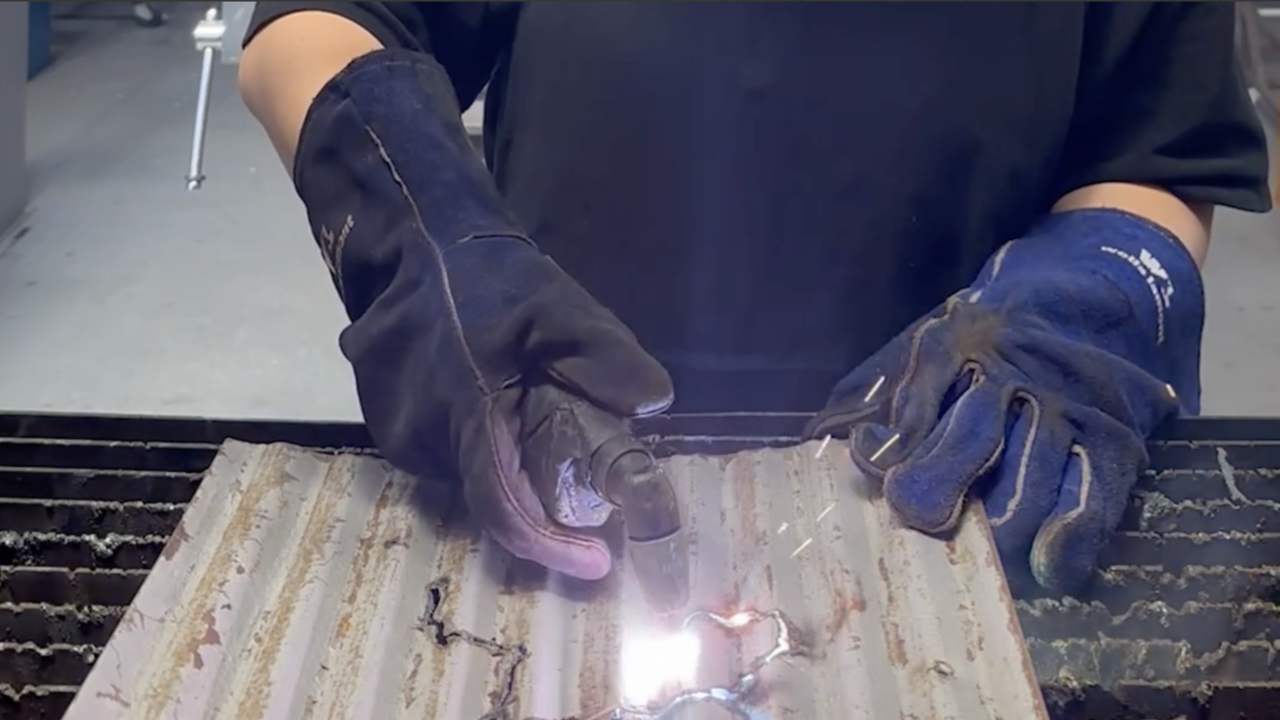Paul Pfeiffer
It's easy to be disconcerted by the different ways that Paul Pfeiffer's campy photographs and meticulously crafted dioramas are linked by shared conceptual preoccupations and a fetishistic attention to minutiae - details which make us aware of the disturbing elements which inhabit the otherwise decorative images and apparently orderly environments.
In The Return of the Real (all works 1998)(named after Hal Foster's book), eight peepholes mounted in rosary formation mimic the perception of a fly on a wall. The peephole images are electronically transmitted from a source in the basement: in the dimly-lit, unfinished space, a maquette of a tent in a forest clearing makes allegorical reference to 'the heart of darkness'. The glass case which houses the tent is sporadically obliterated by the glare of the overhead spotlight.
This 'heart of darkness' harbours a contradiction: at once remote and available for viewing from many angles, the luminescent tent fabric mysteriously veils its contents - you can see in the dark but you can't go inside to see what's in the light.
In the furthest recesses of the basement, a second video feed of the tent is projected at doll-house scale onto a floor-level screen. This version of the tent is particularly uncanny - despite its small scale, it appears realistic, although nothing happens besides the incessant flickering of the video image. Playing with a psychoanalytic trope, (the return of the repressed), and with implications of electronic reproductive technology, Pfeiffer summons the collapse of the real into its simulations.
Taking the viewer through rooms and down stairs, the work traverses several kinds of spaces - from mini sets, to projected scenes, to imaginary topologies. Repeatedly placing the viewer above the work, Pfeiffer invokes the spectre of a panopticon. From this omniscient position, these spaces are transformed into fertile ground for cultivating at once benign and paranoid themes of surveillance and voyeurism.
Pfeiffer's digital prints of Vitruvian Roman cathedral lay-outs, Vitruvian Figures are composed of clusters of pornographic details which appear as ornate patterning until a close scrutiny exposes their prurient content. Similarly, Solomon's Temple is mapped onto three hairless doll scalps Ebony, Brunette and Blonde . A cross-shaped Christian motif emerges stigmata-like from the large pores of the dolls head, a camp site for re-inscription.
In contrast to the tongue-in-cheek trickery of the photographs, Quad N0men Mihi Est (what is my name?), a diorama of Regan's bedroom from the film The Exorcist (1973), conveys a much darker irony and a diabolical vision of inscription. As we gaze through the window bars around the little room which are recessed into the gallery wall, evidence of ghoulish activity comes into focus: blankets tied around bedposts, a bottle of holy water, crucifix and bible on the night table and barely discernible smears of green bile that stain blankets and carpet.
In the film, the young girl's body is contested territory. Inhabited by the demon, she induces preternatural phenomena, speaks in tongues and asks, in the sepulchral voice of the devil, 'who am I?' Regan's dislocation from her body, conveyed most poignantly by the notorious 360% head spin, provides irrefutable evidence for the metaphysical message of the film. An unforgettable cinematic moment, this infernal memory is a kind of demonic inscription which comes back to haunt us.
The process of returning Regan to her body echoes an implicit quest that runs through the exhibition: the quest for 'the real' amidst endless simulacra. As we peep and peak, watch and wait, our perception is refracted, like that of a fly, into myriad facsimiles. Pfeiffer delivers a series of trickster images which, close-up, reveal themselves. But, as with Pfeiffer's recreation of Regan's uninhabited bedroom, the exorcism has already taken place, leaving a trail of evidence but also an empty space waiting to be occupied by new tenants.
















